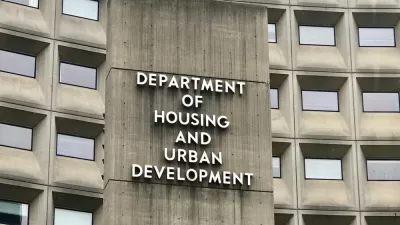The island nation's housing market faces a discrepancy between existing stock and rapidly changing demographics.

A Brookings Institution report by Jiro Yoshida on Japan's rental housing market reveals "a mismatch between housing stock and demographics in a rapidly aging and shrinking society, exemplified by vacant housing units." The country's unique geography and post-war economy have created a market "characterized by a large construction volume, rapid technological progress, fast depreciation of housing value, a thin secondary market, and low maintenance of existing properties."
The combination of scarce habitable land, "frequent and significant earthquakes," and "a rapid change in housing stock, demographics, and lifestyle after WWII" led to a "significant housing shortage in urban areas, especially during the 1950s and 1960s, alleviated in part by active public sector investments," Yoshida writes. "After the housing shortage was resolved, the government enacted the Basic Act for Housing in 2006 by focusing on housing quality issues such as elderly persons’ housing, low carbon emissions, and condominium management."
Other takeaways:
-
"In 2020, approximately 60% of Japan’s newly constructed units were owner-occupied houses and condominiums, and the remaining 40% were rental units," but "rental units account for only 19% of the total floor area."
-
"Young households tend to live in private rental housing. Among heads of households younger than 30 years old, 82% live in private rental housing, and only 9% own houses."
"The biggest challenge," says Yoshida, "is managing the housing stock in an aging and shrinking society."
FULL STORY: Land scarcity, high construction volume, and distinctive leases characterize Japan’s rental housing markets

Planetizen Federal Action Tracker
A weekly monitor of how Trump’s orders and actions are impacting planners and planning in America.

Congressman Proposes Bill to Rename DC Metro “Trump Train”
The Make Autorail Great Again Act would withhold federal funding to the system until the Washington Metropolitan Area Transit Authority (WMATA), rebrands as the Washington Metropolitan Authority for Greater Access (WMAGA).

The Simple Legislative Tool Transforming Vacant Downtowns
In California, Michigan and Georgia, an easy win is bringing dollars — and delight — back to city centers.

The States Losing Rural Delivery Rooms at an Alarming Pace
In some states, as few as 9% of rural hospitals still deliver babies. As a result, rising pre-term births, no adequate pre-term care and "harrowing" close calls are a growing reality.

The Small South Asian Republic Going all in on EVs
Thanks to one simple policy change less than five years ago, 65% of new cars in this Himalayan country are now electric.

DC Backpedals on Bike Lane Protection, Swaps Barriers for Paint
Citing aesthetic concerns, the city is removing the concrete barriers and flexposts that once separated Arizona Avenue cyclists from motor vehicles.
Urban Design for Planners 1: Software Tools
This six-course series explores essential urban design concepts using open source software and equips planners with the tools they need to participate fully in the urban design process.
Planning for Universal Design
Learn the tools for implementing Universal Design in planning regulations.
Smith Gee Studio
City of Charlotte
City of Camden Redevelopment Agency
City of Astoria
Transportation Research & Education Center (TREC) at Portland State University
US High Speed Rail Association
City of Camden Redevelopment Agency
Municipality of Princeton (NJ)





























